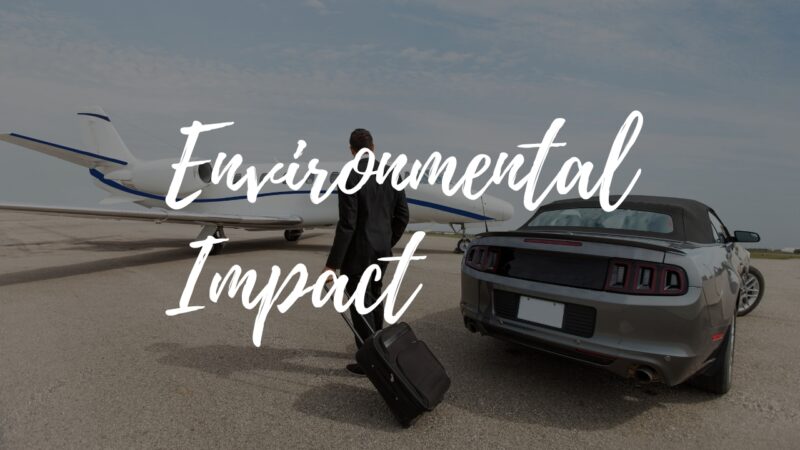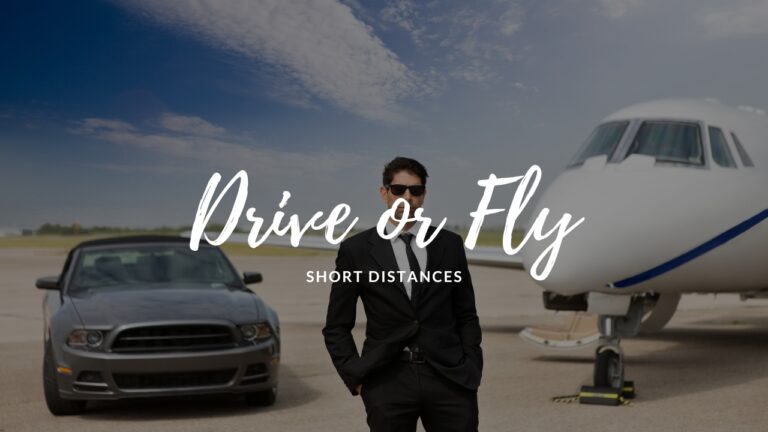Traveling is more than just a necessary part of life; it’s a rich tapestry woven from my countless experiences across cities, states, and countries. Whether it’s been for work or pleasure, family visits, or solo trips, I’ve spent countless hours behind the wheel and up in the air.
Over the years, the rhythm of tires on the highway has become as familiar to me as the hum of an aircraft mid-flight. A question that often nudges my curiosity is whether it’s better to drive or fly when it comes to short distances.
Drawing from my extensive first-hand experiences and supported by solid research, this blog post aims to delve into this question. We’ll navigate the highways and skyways of factors like time, cost, environmental impact, and personal convenience, offering you insights grounded in both the practical and the personal.
Time Considerations

Time is an invaluable resource, and we often find ourselves weighing our options based on how much time they require. When comparing flying and driving, especially over short distances, the time factor becomes particularly important.
Travel Time
One of the first things to consider when comparing driving and flying is the actual time it takes to travel from point A to point B. While it might seem that flying is faster due to the high speed of airplanes, this isn’t always the case when traveling short distances.
For instance, on the LAX-SFO route, a flight usually takes around 1.5 hours. However, this does not take into account the time spent on airport procedures such as check-in, security checks, and boarding. In contrast, driving would take about 5 to 6 hours. However, this time is often more flexible, as it doesn’t involve the rigid scheduling associated with flights.
Waiting Time
Next, we delve into the time spent waiting, which is often overlooked when comparing the two modes of transport. Air travel, despite its swiftness, often involves significant waiting time.
It’s recommended to arrive at the airport at least 2 hours before your flight for domestic travel. This, combined with potential delays, can significantly inflate travel time. On the other hand, when driving, you can depart at your convenience and are less likely to encounter unexpected delays.
Time Flexibility
The flexibility of time is a factor worth considering. If you prefer having control over your schedule, driving may be more appealing.
When you drive, you can choose your departure time, take breaks when needed, and control the pace of your journey. This is not the case with air travel, where schedules are fixed, and any changes can lead to additional costs or missed flights.
Cost Considerations

The cost of commuting is a crucial deciding factor for many. In this section, we will evaluate the financial aspects of both driving and flying.
Ticket Expenses
While air travel provides speed and convenience, it often comes at a higher price. The cost of a flight ticket depends on various factors, including the airline, time of booking, and demand.
For instance, a round-trip ticket for the LAX-SFO route can range from $100 to over $400, depending on these variables. Meanwhile, the cost of driving would primarily include gas and vehicle wear and tear, which would generally be significantly less than a flight ticket.
Hidden Costs
While the ticket price often represents the most significant expense in air travel, there are other hidden costs involved, including:
- Baggage fees
- Transportation to and from the airport
- Parking fees at the airport (if leaving your car)
- Food and drinks at the airport
These costs can quickly add up, making air travel more expensive than initially estimated.
Cost of Convenience
Driving can often be less expensive than flying, but it also comes with its own set of costs. These include wear and tear on your vehicle, potential lodging expenses if the drive is long, and the physical and mental toll of long hours behind the wheel.
The value of convenience is highly subjective and depends on personal preferences. Some might find the convenience of flying worth the extra cost, while others may prefer the flexibility and cost-saving aspects of driving.
Environmental Impact

As we grow more conscious of our environmental footprint, it’s crucial to consider the environmental impact of our choice of transport.
Carbon Footprint
Air travel is one of the largest contributors to greenhouse gas emissions. According to the Environmental Protection Agency, aircraft contribute 12% of U.S. transportation emissions, and U.S. aircraft emissions are approximately 29% of global aircraft emissions.
In contrast, driving, especially with multiple passengers or in fuel-efficient vehicles, often has a lower carbon footprint per passenger mile than flying.
Noise Pollution
Airports are often associated with high levels of noise pollution, which can affect surrounding communities. On the other hand, noise pollution from individual vehicles is typically less disruptive to communities but can add up in congested urban areas.
Other Environmental Considerations
While air travel has a more significant impact on carbon emissions, driving isn’t free from environmental consequences. Vehicle emissions contribute to air pollution, and road construction can disrupt natural habitats.
It’s also worth mentioning that innovations in both fields, such as electric vehicles and more fuel-efficient aircraft, aim to reduce these environmental impacts.
Personal Convenience and Comfort

Finally, personal convenience and comfort are often the decisive factors in choosing a mode of transportation.
Comfort Levels
The comfort level varies widely between individuals. Some may find the ample legroom, the ability to stop when desired, and the absence of turbulence in a car more comfortable. Others might prefer the quickness of air travel, the onboard services, and the ability to move around during the flight.
Privacy and Space
Driving usually offers more privacy and space, especially if you are traveling alone or with a small group. You can control the music, temperature, and stops along the way.
In contrast, air travel offers less privacy and personal space. However, it frees you from the responsibility of driving, allowing you to use your time to read, work, or rest.
Safety
According to the National Safety Council, the odds of dying in a motor vehicle crash are 1 in 107, compared to a 1 in 9,821 chance in air travel. Despite common fears, flying is statistically safer than driving.
The Future of Short-Distance Travel

As technology and societal norms evolve, the landscape of short-distance travel will continue to change. Let’s take a peek into what the future might hold.
Technological Innovations
Technological advancements are set to revolutionize both driving and air travel. Electric vehicles are becoming increasingly common, offering a more eco-friendly option for road travel.
Similarly, the aviation industry is working on more fuel-efficient aircraft and exploring options for electric planes. Innovations such as flying taxis and drone delivery services are not far from becoming commonplace, changing the dynamics of short-distance travel.
High-Speed Rail
High-speed rail is a future consideration that could bridge the gap between flying and driving for short distances. Countries like Japan and France have been utilizing high-speed rail for years, providing a fast, efficient, and eco-friendly mode of transportation.
In the U.S., efforts to establish more extensive high-speed rail networks are ongoing, which would provide another viable option for short-distance travel.
Autonomous Vehicles
The future of road travel will likely involve autonomous vehicles. Self-driving cars could eliminate many of the hassles and safety concerns associated with driving, making road trips more convenient and comfortable.
Sustainable Travel
As society becomes more conscious of our environmental footprint, sustainable travel will become increasingly important. Whether this means more fuel-efficient planes, electric cars, or choosing to travel less, our approach to short-distance travel will undoubtedly be shaped by sustainability concerns.
Final Words

The decision between driving and flying for short distances often depends on various personal factors, including time, cost, environmental considerations, and personal comfort and convenience. Weighing these factors can help you make the best decision for your specific circumstances.
Whether you’re looking at the bustling LAX-SFO route or a simple countryside trip, understanding these factors will ensure you make the best commuting decision for your needs.
When contemplating travel options for short distances, one might question the safety of red-eye flights, especially when flying into the twilight zone.







